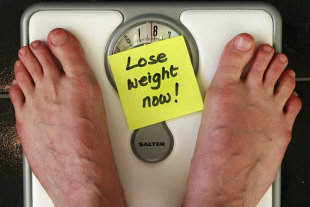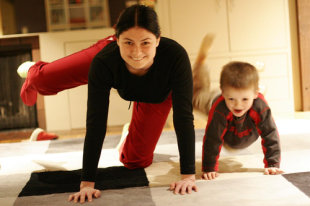It's no secret that getting in great shape takes time and effort. After all, if every quick fix, late-night infomercial claim were true, we'd all have perfect bodies. The good news is you can take steps to speed up your results. One proven strategy: Change your routine every six or so weeks. Your muscles adapt to the same workout day after day (think back to your first bootcamp class and how much easier it got as you became stronger). Challenge your body by adding a new angle, mixing up the order of your exercises, or simply adding a twist to recruit different muscles.
Here are five more expert tips to upgrade your workout .
1. Dynamic warm ups: Warm-ups don't have to be boring. While jogging on the treadmill may work for your legs, it does little to prepare your upper-body muscles. Try replacing your tired warm-up with a dynamic version.
Here are five more expert tips to upgrade your workout .
1. Dynamic warm ups: Warm-ups don't have to be boring. While jogging on the treadmill may work for your legs, it does little to prepare your upper-body muscles. Try replacing your tired warm-up with a dynamic version.
"Dynamic, full-body warm-ups take your body through a variety of movements, allowing you to increase circulation to the muscles you'll be using in your main workout," says Polly de Mille, RN, RCEP, CSCS, exercise physiologist at Women's Sports Medicine Center a the Hospital for Special Surgery in New York. Try this move before your next workout for a total-body warm-up.
Medicine Ball Woodchop: Stand with feet slightly wider than shoulder-width apart and hold onto a light to medium medicine ball (5 to 6 lbs). Push your hips back and drop into a squat as you bring the ball down to touch your left foot, shin, or knee (depending on your flexibility). Rise up out of the squat as you simultaneously rotate and raise the ball up and across your opposite side, as if throwing it over your opposite shoulder. Do 2 sets of 10 lifts to each side, alternating sides after each set.
Developing single-leg stability is a powerful tool in preventing injury, particularly in sports such as running, de Mille says. "In running you're essentially jumping from one leg to another. Shaky single-leg stability leads to loss of alignment every time you land-a perfect setup for injury."
For your next workout, try standing on one leg for half of every set of upper-body moves; switch to the other leg for the other half, or try to incorporate unilateral moves like one-legged squats into your routine.
3. Off-center moves: Off-center moves involve an unequal weight distribution that requires your body's core muscles to "kick in." Many everyday activities involve off-balance maneuvers&mdashlcarrying a heavy suitcase or purse, swinging a tennis racket, or carrying a child or a bag of groceries in one arm.
Simple ways to incorporate off-center moves include performing a squat while pushing a fitness ball against the wall with one arm; or hold a kettlebell in one hand while performing a squat or lunge .
"Practicing off-center moves in a focused, controlled manner helps develop the core stability necessary to maintain good alignment when performing these movements in real life," de Mille says.
4. Add twists and turns: More than 85 percent of the muscles encircling your core are oriented either diagonally or horizontally and have rotation as one of their functions," de Mille says. "Yet most people focus on one vertical muscle-the rectus abdominis, the 'six pack' muscle."
Rotational moves work your core, says Tamilee Webb, MA, fitness trainer known for the Buns of Steel video series. "For example, try rotating your torso while holding a medicine ball during a front lunge, which requires more stability than a lunge without the ball or the rotation," Webb says. These movements also mimic real-life activities like stepping and then rotating/twisting to put groceries in the car.
5. Raise the incline: No, we're not referring to the treadmill. By raising the position of the bench while performing chest presses, you add variety, which in itself may elicit strength gains , de Mille says. "Your body adapts to the stress you apply to it, so variety is key to gaining overall functional fitness."
Performing exercises on a flat surface, incline, decline, or unstable surface like on a stability ball can all offer slightly different loads to the muscle. "Whenever you change the incline to do an exercise , you're changing the intensity and the muscle groups that will perform the exercise," Webb says. For example, the flat bench focuses on the anterior deltoid (front of your shoulder) and pectorals (chest), but doing the same exercise on an incline requires more deltoids (shoulders). Try raising the incline for your next set of chest presses , or perform them on a fitness ball.
Ref: http://sg.news.yahoo.com/5-ways-to-get-lean-and-fit-faster.html


